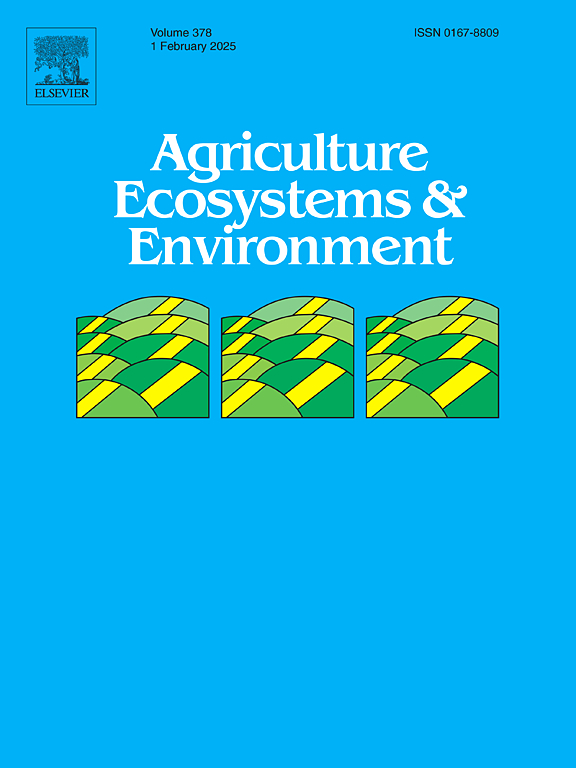Microbial effects of prolonged nitrogen fertilization and straw mulching on soil N2O emissions using metagenomic sequencing
IF 6
1区 农林科学
Q1 AGRICULTURE, MULTIDISCIPLINARY
引用次数: 0
Abstract
Nitrous oxide (N₂O) emissions from agricultural soils significantly contribute to climate change. While straw mulching and nitrogen fertilization are crucial agricultural practices influencing soil nitrogen dynamics, their long-term effects on N₂O emissions and the underlying microbial mechanisms remain elusive. The main objectives of this study were to investigate the long-term effects of straw mulching and nitrogen fertilization on soil N2O emissions, microbial communities, and nitrogen cycling functional genes in a winter wheat-summer maize rotation system in the Guanzhong Plain, China. This study investigated the microbial-driven effects of straw mulching at rates of 0 and 4500 kg ha−1 (namely CT and SM, respectively) and nitrogen application at rates of 0, 240 kg N ha−1 (namely N0 and N240, respectively) on N2O emissions in a field experiment established in 2003. Nitrogen fertilization significantly increased N2O emissions, nitrification and denitrification potentials, while straw mulching had no significant effect. Compared to CTN0 and SMN0 treatments, cumulative soil N2O emissions under CTN240 and SMN240 increased by 317.4 % and 238.5 %, soil nitrification potential (NP) increased by 262.1 % and 117.3 %, and soil denitrification potential (DNP) increased by 92.91 % and 52.53 %, respectively. Nitrogen fertilizer application increased the abundance of nitrification and denitrification genes, thereby stimulating N2O emissions. However, straw mulching promoted the abundances of assimilatory nitrate reduction (ANRA), dissimilatory nitrate reduction (DNRA), and nosZ genes, facilitating the reduction of N2O reduction to N2 in the absence of nitrogen fertilization. Partial least squares path modeling (PLS-PM) revealed denitrification functional genes directly influenced N2O emissions, while soil properties and microbial communities indirectly contributed to increased emissions. Among these factors, soil NH4+-N and DNP were the primary drivers of N2O emissions. These findings highlight the importance of integrated nitrogen management and straw mulching strategies for mitigating N₂O emissions from agricultural ecosystems.
求助全文
约1分钟内获得全文
求助全文
来源期刊

Agriculture, Ecosystems & Environment
环境科学-环境科学
CiteScore
11.70
自引率
9.10%
发文量
392
审稿时长
26 days
期刊介绍:
Agriculture, Ecosystems and Environment publishes scientific articles dealing with the interface between agroecosystems and the natural environment, specifically how agriculture influences the environment and how changes in that environment impact agroecosystems. Preference is given to papers from experimental and observational research at the field, system or landscape level, from studies that enhance our understanding of processes using data-based biophysical modelling, and papers that bridge scientific disciplines and integrate knowledge. All papers should be placed in an international or wide comparative context.
 求助内容:
求助内容: 应助结果提醒方式:
应助结果提醒方式:


